#143: History of Fort Sumter, More Duels (!), and an African American Genealogy Workshop
For South Carolina history lovers far and wide! Published weekly on Monday mornings. Enjoy weekly SC history articles, upcoming SC historical events, and other South Carolina recommendations.
Dear readers,
Welcome to SC History Newsletter #143!
I am excited to share that this week is my 5-year wedding anniversary! My husband and I heading to New York on Thursday for a few days to soak in a lot of wonderful food and museums (and a Broadway show — hooray!). I will be sure to report back, especially if I see some of our amazing South Carolina historical figures in our museum adventures.
I want to thank our amazing subscriber David M. for writing in last week with some AWESOME research about another famous South Carolina duel, which I got his permission to share below. You won’t want to miss!
Now, let’s learn some history!
Yours truly,
Kate
(Writing from Greenville, SC)
Support the SC History Newsletter by considering heritages teas (inspired by South Carolina and American history!) from our fantastic sponsor Oliver Pluff & Co. — click on their beautiful ad below! :)
➳ Housekeeping for new subscribers!
New friends! There are over 100 previous SC History newsletters on topics ranging from the founding of Charleston, sunken Confederate submarines, railroad tunnels filled with blue cheese, and more! See our archive here!
Send me your comments or topic ideas: I love it when subscribers write to me! Have a SC History topic or question you’d like for me to write about? Have additional ideas or feedback? Just reply to this email and let me know!
Join us on social: Keep the conversation going and join over 100 other subscribers by becoming a member of our SC History Newsletter Facebook Community here!
If your email “cuts off”: In your email app or website, if my emails “cut off” for you, please click the title of the email and it will take you to the full post on the Substack. I don’t want you to miss any content!
Love the SC History Newsletter? Please click the button below to share with a friend!
➳ Featured SC History Event of the Week:
🗓️ Saturday, May 17th from 10:00 am - 12:00 pm
📝 “African American Genealogy Workshop”
📍South Carolina Archives and History Foundation | Columbia, SC
🎟️This event is free but pre-registration is required
💻 Website
From the event website:
“The South Carolina Department of Archives and History is hosting an African American Genealogy Workshop on Saturday, May 17, 2025, 10:00 AM – Noon, at the SC Archives & History Center, located at 8301 Parklane Road in Columbia. The workshop will focus on pre and post emancipation government sources in the collections including census records, vital records, military records, state records, county records, and online sources. Join South Carolina Department of Archives & History Deputy Director for Archives and Records Management Patrick McCawley and Lahnice Hollister, author of “Unveiling Family Secrets: My Journey Through Archives and the Power of Historical Records” for a discussion highlighting resources and methods of genealogy research. Learn about the information available at the archives as they guide you through the process of accessing various records. The Research Room will be open with staff available to assist attendees. This event is free but pre-registration is required.”
➳ 🗓️ Paid subscribers get access to my SC History Events Calendar that organizes all the upcoming SC history events I have discovered. Please let me know if you’d like to add an event to the calendar! Reply to this email to send me your events.
➳ Subscriber research!
Friends! Popping in with a fun tidbit.
Our amazing subscriber David M. read the recent newsletter on famous duels in South Carolina (See SC Newsletter #40 if you missed) and he sent me some fun research he has done on his ancestors, which included news of another famous duel in Charleston:
(First, David shared this clip from the Charleston Mercury)
From the Charleston Mercury 1861:
A duel near Manassas. Manassas, Nov. 22.
A hostile meeting took place yesterday, (21st) between William A. Courtney correspondent of the Charleston Mercury, and Captain Cuthbert, of the Palmetto Guards.
The cause of the difficulty was a recent publication by the Palmetto Guard, reflecting injuriously upon Mr. Courtney. After an exchange of shots, the matter was honorably settled.
(Then, David connected this duel to an excerpt from the diary of Mary Boykin Chestnut — of whom I write in our history essay below on Fort Sumter!)
Excerpt From “A Diary From Dixie” by Mary Boykin Chesnut
“I was so ill I could barely sit up, and Captain Cuthbert could not use his right hand or arm at all. I had to draw his match, light his cigar, etc. He was very quiet, grateful, gentle, and, I was going to say, docile. He is a fiery soldier, one of those whose whole face becomes transfigured in battle, so one of his men told me, describing his way with his company. He does not blow his own trumpet, but I made him tell me the story of his duel with the Mercury’s reporter. He seemed awfully ashamed of wasting time in such a scrape.”
(Then, David found a letter written by his Great Grandfather James K. Munnerlyn Jr. to his sister that discusses this very duel!!)
A transcribed letter civil war letter written by my Great Grandfather James K Munnerlyn Jr:
Camp Camden Dec 16th, 1861
My Dear Sister,
I received your letter stating that Tom had left for the wars yesterday. I will look out for him and hand him over to Johny as he is more in need of him than I. Mr S need have no uneasiness about the pass he got for Tom. I will make that all right. It was a very good way and in fact a very Just way of sending him. I suppose you have received my last letter in which I was sure of a fight here. It was very foolish of me to write in that way but I will tell you how come I came to be so certain of a fight. We have been expecting one for some time and the other night just as I commenced the letter the assembly was beaten we formed in double quick time our Col read to us orders from Major Gen to cook three day provision that the enemy were advancing and that we would meet them in a day we gave three cheers and I retired to my tent and finished the letter. The Gen are still expecting a fight here this fall but I think they will be very much mistaken. No matter what you here don’t believe that we are fighting here.
unlessWe got news of the great fire in Charleston several days ago. I have been very uneasy about you we heard the Mills House is safe an I suppose yours is also though I suppose you have had a great deal of trouble moving your furniture. I am very anxious to hear from you about it. Every thing is dull in Camp. If we don’t have a fight soon I don’t know what will become of us our men are fighting among themselves we have had several duels, I suppose you heard of Capt Cuthberts with Cortny. We had an execution the other day, two of the La Tigers Rifles were shot for assaulting the Guard. I went to see it as I wanted to know how the Military way of doing these things. The whole division were drawn up forming a hollow square the two condemned men were made to kneel with their backs to a post to which their hands were tied behind them. Their own Company was drawn up in front of them a squad of the company was marched up and within ten paces of them the word was given to fire and both fell dead. I am glad Brother stand the Chance of being made Lu/t Col but should not think he would give up his office in the Georgetown Artillery for add to a Col. Give my love to Mr. Stocking and Bailey. I will write as soon as Tom arrives.Your Off Bro J K Munnerlyn
Additional notes from David about the context of this research:
“Tom was apparently a slave/servant sent from home. The Mills house still stands in Charleston — was then and still is a “grand” hotel. Cortny was a writer for the Charleston Mercury and had written an article where he questioned the dedication of the 2nd South Carolina unit. The Captain of the unit Cuthbert then followed up with the challenge- can you imagine if army officers were allowed to challenge newspaper writers with whom they disagreed today to duels? BTW, duel never occurred, and Cuthbert was quoted in Mary Chestnut’s diary as saying it was a complete waste of time and energy.”
David, thank you so much for sharing — so awesome!!
➳ SC History Topic of the Week:
History of Fort Sumter
The name of Fort Sumter immediately conjures in our minds the start of the Civil War. Indeed, the fort is central to Civil War history, but let’s start at the very beginning of its history.
The fort was named after Revolutionary War hero, Thomas Sumter (known as the Fighting Gamecock) (See SC History Newsletter #76 on Thomas Sumter here).
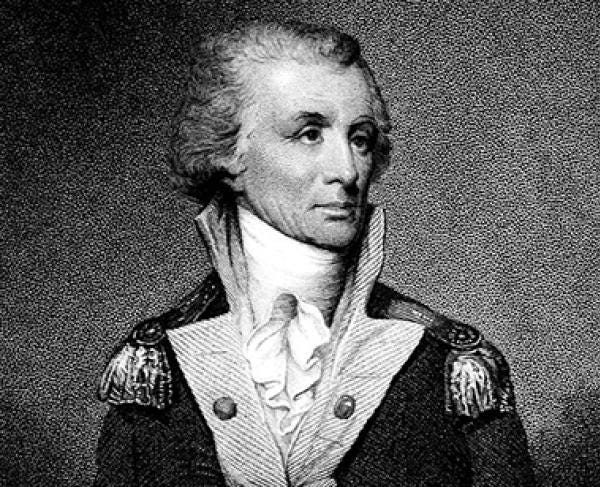
Construction on the fort began in 1829 and was built as a part of a system of fortifications to protect the American coastline from attack.
The site for the fort was a sandbar near the entrance of Charleston Harbor. The site had played a critical role in the 1776 Battle of Sullivan’s Island (See SC History Newsletter #95 here). During that particular battle, British ships had run aground in the shallow waters, taking them out of action, which led to a patriot victory.
From the humble sandbar sprouted a manmade island that would become Fort Sumter. 70,000 tons of granite were used to create the island.


By April of 1861 (32 years after initial construction), the fort was still under construction, but had become an “imposing fortress” on the water.
Fort Sumter was designed to house 650 men and 135 cannons.

It had 5-foot-thick brick walls that stood 50 feet high with 3 levels of artillery emplacements.
Inside the fort were “wooden officers’ quarters, enlisted men’s barracks, and a brick powder magazine.” (Note: a powder magazine is a building or structure that stores gunpowder).
The range of the fort’s artillery at that time was approximately 1 mile. The cannons from Fort Sumter and Fort Moultrie “commanded the entrance to the harbor.”
After years of growing tensions, on December 20, 1861, South Carolina seceded from the United States following Abraham Lincoln’s election as President.
At that time, the only federal troops (soon to be named Union troops) in Charleston harbor were 85 men stationed at Fort Moultrie under the command of Major Robert Anderson.
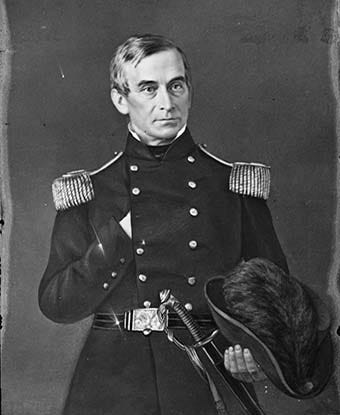
When secession was declared, Major Anderson had a decision to make:
“Feeling like he was in an indefensible location, Anderson made the decision on December 26, 1860, to spike the cannon at Moultrie, burn the carriages, and move his command across the harbor and into the unfinished Fort Sumter. South Carolina militia quickly took over all the other forts in the harbor and began training artillery on Fort Sumter.”
Before President Lincoln’s inauguration, President Buchanen tried to send a ship, The Star of the West, to resupply Union-occupied Fort Sumter. What happened next: Citadel military college students stationed at Morris Island fired on the ship. The Star of the West fell back and did not return fire.

Soon, 6 more Deep South states seceded from the Union, and the Confederate States of America was formed. It became a top priority for the Confederate government to take control of Charleston Harbor.
On March 4, 1861, Abraham Lincoln was inaugurated President of the United States.

Lincoln “refused to acknowledge the legitimacy of states’ secession or the sovereignty of the Confederate States. With Anderson’s garrison running low on supplies, Lincoln decided to send an armed fleet to resupply Fort Sumter.”
The nation watched as a tense standoff began in Charleston Harbor…
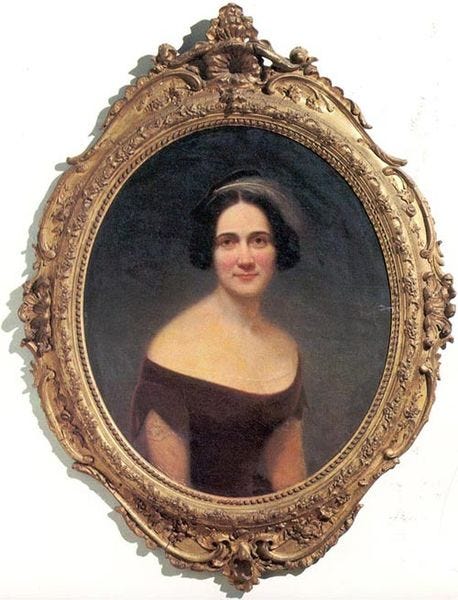
Southern diarist Mary Boykin Chesnut has one of the most complete and riveting diaries from the early days (and through) the Civil War. I highly recommend the book of her papers (see link here). She wrote on March 31, 1861:
“There stands Fort Sumter, and thereby hangs peace or war.”
Mary Chestnut and her husband were personally acquainted with Major Robert Anderson. Mary had hoped his Union troops would leave. She knew if they didn’t, it would mean war. She wrote in her diary of Anderson on April 2, 1861:
“Why did that green goose Anderson go into Fort Sumter?”
In the morning of April 12, 1861, the Confederates gave the Union troops on Fort Sumter an ultimatum to evacuate or be fired upon. Anderson said he would “stay until he ran on supplies three days later. The Confederates informed him they would open fire.”
At 4:30 am on April 12, 1861, the first shot of the Civil War was fired from a 10-inch mortar at Fort Johnson. The mortar shell “arced over Fort Sumter and exploded, a signal for all the Confederate artillery to open fire on the fort. Both sides fired at each other over the course of 34 hours.”

Mary Chestnut provides a chilling account of this time as she observed from Charleston:
“At the heavy booming of cannon, I sprang out of bed, and on my knees, I prayed as I have never prayed before. There was a sound of stir all over the house, pattering of feet in the corridor-all seemed hurrying.” [Mary then went to rooftop and noticed:] “The women were wild, they prayed while the men stood yelling their encouragement to the gunners.” [Then on a more personal note she wrote:] “I knew my husband was rowing about in a boat somewhere in that dark bay, and who could tell what each volley accomplished of death and destruction.”
As the attack wore on, and the buildings of the Fort Sumter burned, Major Anderson surrendered to the Confederates.
General Anderson and his men were able to take their flags and return to the North.
In the South, the capture of Fort Sumter was considered an important “declaration of independence” from the Union.
In the North, the firing on Fort Sumter was viewed as an assault on the American Union and “rallied thousands to the defense of the American flag.” While at the same time, Lincoln’s call for soldiers in the North forced Upper South states to secede and join the Confederacy.
An interesting side history about the Fort Sumter Flag above…
After surrendering at Fort Sumter in 1861, General Anderson brought the flag to New York City for an April 20, 1861, patriotic rally, where it was flown from the equestrian statue of George Washington in Union Square. More than 100,000 people thronged Manhattan's Union Square in what was, by some accounts, “the largest public gathering in the country up to that time.” The flag was then taken from town to town, city to city throughout the North, where it was frequently "auctioned" to raise funds for the war effort. Any patriotic citizen who won the flag at auction “was expected to immediately donate it back to the nation, and it would promptly be taken to the next rally to repeat its fundraising magic.” The flag was a widely known patriotic symbol for the North during the war.
Back to Charleston in the aftermath of the bombardment of Fort Sumter…
Mary Chestnut reflected in her diary on the grave implications of what would happen next. Here are some pensive excerpts from her diary:
“And so we fool on, into the black cloud ahead of us.”
“This Southern Confederacy must be supported now by calm determination and cool brains. We have risked all and we must play our best, for the state is life or death. Woe to those who began the war if they were not in bitter earnest.”
Now in Confederate control, Fort Sumter remained a powerful symbol throughout the war.
From Battlefields.com:
“It [Fort Sumter] became a target for the Union armies. On April 7, 1863, the Union returned to the harbor and attempted to retake Sumter, but they were driven back. Beginning in July of 1863, the Union began to lay siege to Charleston and Fort Sumter. By September of 1863, the Union captured all of Morris Island. The rifled artillery opened up on Fort Sumter less than a mile away. The Union fired more than seven million pounds of metal at the fort. The bombardment lasted on and off for 587 days. The brick walls of the fort were reduced to rubble. But as they continued to bombard the fort it only made it stronger as the rubble became essentially a massive earthwork. The Union attempted to land troops on the island fort but were repulsed.”
At the end of the war, Charleston was taken by General William T. Sherman’s army, which marched through central South Carolina. On February 17th, 1865, the Confederate troops evacuated Charleston and Fort Sumter and the Union re-took both.
The end of the war was very dark. Mary Chestnut wrote in her diary:
“The dreadful work of death is beginning again.”
“The deep waters are closing over us.”
They say no living thing is found in Sherman’s track, only chimneys and telegraph poles to carry the news of his attacks backwards.”
After Christmas of 1864: “Darkest of all Decembers ever my life has known, sitting here by the embers stunned, helpless, alone.”
As the war continued and became worse: “I daily part with my raiment [clothing] for food. We find no one who will exchange wearables for Confederate money. So, we are devouring our clothes.”
The Civil War officially ended on April 9th, 1865, when Confederate General Robert E. Lee surrendered his troops to Union General Ulysses S. Grant at Appomattox Court House in Virginia.
5 days later on April 14, 1864, Major Robert Anderson returned to Fort Sumter. It had been 4 years to the day when he had lowered the American flag and left Fort Sumter. Now he was back for a ceremonial re-raising on the American flag on the “battered remnants of Fort Sumter.”
Author Shelby Foote quotes Anderson as saying, "I thank God that I have lived to see this day," as he took the flagpole's halyards in his hands.
The Rev. Henry Ward Beecher was the principal orator at the 1865 celebration, and gave a lengthy speech, as was the custom of the day. He said in conclusion:
"On this solemn and joyful day, we again lift to the breeze our fathers’ flag, now, again, the banner of the United States, with the fervent prayer that God would crown it with honor, protect it from treason, and send it down to our children.... Terrible in battle, may it be beneficent in peace [and] as long as the sun endures, or the stars, may it wave over a nation neither enslaved nor enslaving.... We lift up our banner, and dedicate it to peace, Union, and liberty, now and forevermore."

Re-raising the American flag on Fort Sumter (Image Source: Alamy.com) Later that night on April 14th, President Abraham Lincoln was tragically assassinated.
Mary Chestnut wrote in her diary:
On Lincoln’s assassination: “This is dreadful. Who caused this calamity, for we will all be blamed.” A few days later: “What will the Yankees do to us now? Will retributions begin?”
Also from Mary Chestnut as the war came to a close:
“We are scattered, stunned, the remnant of heart left alive is filled with brotherly hate. Whose fault? Everybody blames someone else. Only the dead heroes left stiff and dark on the battlefield escape.”
Even after the Civil War, Fort Sumter continued to be a strategic militarily and navigational beacon.
In the 1890s, a “large Endicott battery” was constructed inside the old fort. Note: an Endicott battery is a type of coastal artillery fortification by the U.S. military in the late 1800s and early 1900s and was named after Secretary of War William Crowninshield (that is not a typo) Endicott.
The military continued to use Fort Sumter until it was decommissioned after World War II in 1947. Thereafter, it was transferred to the National Park Service, which “preserved and interprets the site today.”


Visitors to Fort Sumter can take a boat ride out to the fort, visit the fort’s museum, and learn all about the significant history of the site.
Have you visited Fort Sumter before? Leave a comment and tell us about your experience!
If you voted just “OK” on the newsletter today, I want to hear from you! Reply to this email and send me your feedback. :)
➳ Sources — History of Fort Sumter
"Building Fort Sumter." The Unwritten Record, National Archives, 6 Apr. 2018, https://unwritten-record.blogs.archives.gov/2018/04/06/building-fort-sumter/. Accessed 28 Apr. 2025.
"Fort Sumter History." American Battlefield Trust, https://www.battlefields.org/learn/articles/fort-sumter-history. Accessed 28 Apr. 2025.
Gadorris, Lincoln. "The Diary of Mary Chesnut (Article 28)." A Lincoln by Gadorris, https://www.alincolnbygadorris.com/blog/the-diary-of-mary-chesnut-article-28. Accessed 28 Apr. 2025.
"Robert Anderson." National Park Service, https://www.nps.gov/people/robert-anderson.htm. Accessed 28 Apr. 2025.
"Text Panels, Fort Sumter Visitor Education Center." National Park Service, https://www.nps.gov/fosu/learn/historyculture/upload/FOSU-VEC-exhibit-text.pdf. Accessed 28 Apr. 2025.
"Chesnut, Mary Boykin Miller." South Carolina Encyclopedia, University of South Carolina, https://www.scencyclopedia.org/sce/entries/chesnut-mary-boykin-miller/. Accessed 28 Apr. 2025.










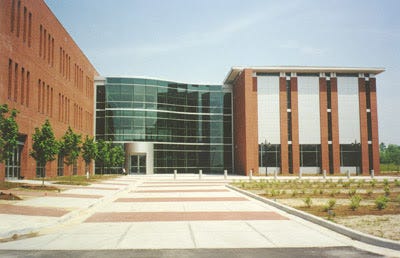



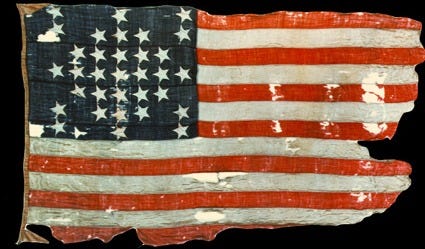



Another reminder to send this newsletter to our 8th grade history teacher since they teach SC history!